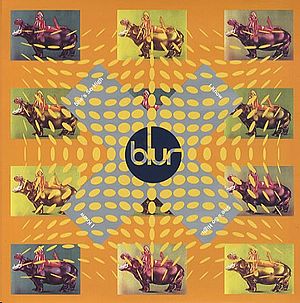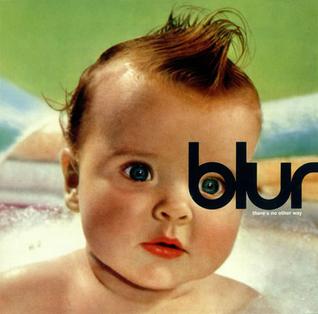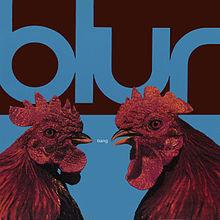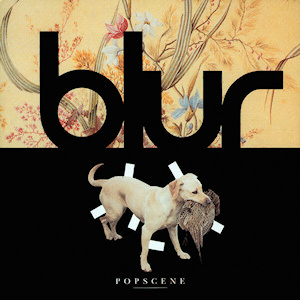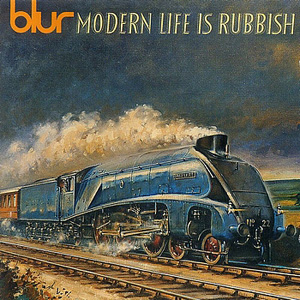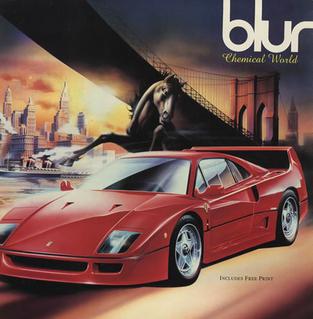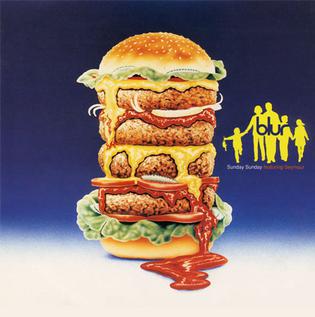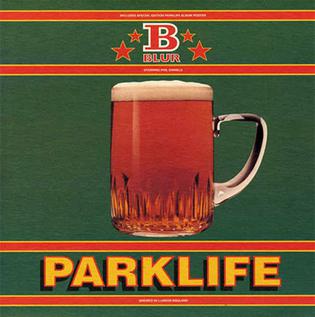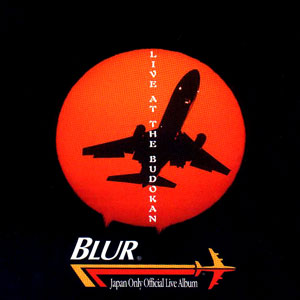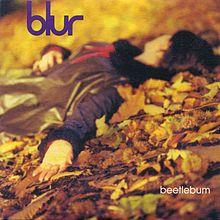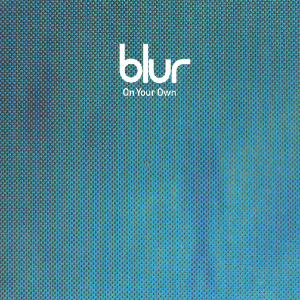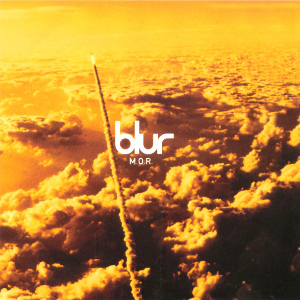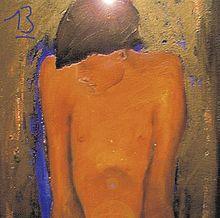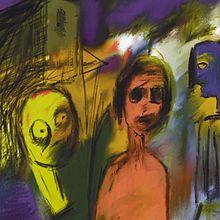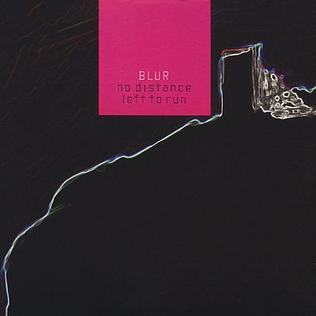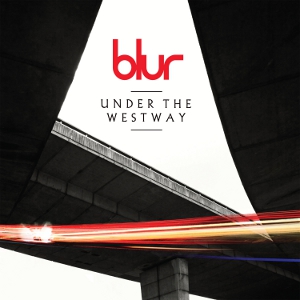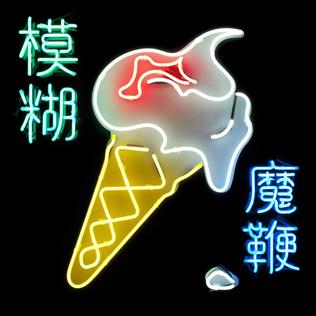
English rock band who initially debuted with a Madchester-influenced sound in 1990 before radically reinventing themselves as 90s torchbearers of British guitar pop, following in the tradition of The Kinks, The Beatles, The Jam, Madness. Their 1994 album Parklife made them superstars in the UK and Britpop’s leading band. In 1997, Blur reinvented again, incorporating American indie rock influences into their sound and finally achieving some success in the US. Internal tensions and diverging interests led to the group’s hiatus in 2004. They reformed in 2009 and 2012 for live performances and put out their eighth studio album in 2015.
Details
- Years Active: 1988-2004, 2009, 2012-2015
- Peak Success: 1991, 1994-2000
- Origin: London, England, United Kingdom
- Styles/Movements: Britpop, Indie Rock, Madchester
- Labels:
- Food [1990-2000; UK]
- SBK Records [1991-1994; US]
- Virgin [1995-2003; US]
- Parlophone [2003-2015; UK]
- Warner Music [2015; US]
- Core Members:
- Damon Albarn (vocals)
- Graham Coxon (guitar)
- Alex James (bass)
- Dave Rowntree (drums)
- Spotify monthly listeners: 7,363,181 (as of May 16, 2021)
- Links: Website | Youtube | Spotify | Wikipedia | Allmusic
Playlist
Music Videos
History
Formation
Damon Albarn and Graham Coxon met as children while attending school together in Essex, a county in the southeast of England. Dave Rowntree was also from Essex and played in bands with Coxon while growing up. Albarn would later go off to drama school while Coxon enrolled at Goldsmiths College in London, where he met fellow student Alex James. In 1988, having quit acting school, Albarn enrolled in a music course at Goldsmiths and was looking to form a band. His old friend Coxon introduced him to Rowntree, who quit his job in Essex and moved to London to play drums in the new band, Circus. When Circus’s guitarist left, Albarn invited Coxon to join them. After a few more members quit, James joined as the bassist. The new foursome changed their name to Seymour in December 1988, inspired by the J.D. Salinger novella, Seymour: An Introduction.
Seymour began playing gigs around London the following year, soon attracting the attention of Andy Ross at Food Records. Food was started in 1984 by David Balfe (former keyboard player of new wave band The Teardrop Explodes) as an independent label, but by this point EMI’s Parlophone label had become an investor, putting them somewhere between a major and an indie. Ross and Balfe liked the band but hated their name. After being given a list of ideas, the foursome chose the name Blur and signed with Food in March 1990.
Unsurprisingly for a band formed at an art school, the band’s interests were eclectic and wide-ranging, and their live shows were theatrical and chaotic with Albarn doing all sorts of onstage antics. He told NME in a 1990 interview, “To feel ill at the end of a gig, that’s great. That’s what I’d have liked to have achieved when I was acting but I couldn’t because I was so conscious of myself. In a funny way you can get away with more in a band than you can when you’re an actor.” Reflecting back on their early days, Rowntree told Mojo in 2000, “We were trying to find our feet. We didn’t really know what we wanted to do, but we knew how we wanted it to feel. It was about thrashing around and acting a bit mad.”
Blur toured the UK for a few months testing out songs. In the meantime, Food had a huge success with another of their bands, Jesus Jones, and was looking to Blur to continue their good fortune. The label would let the band experiment on their B-sides but the singles were to be commercially oriented. The same recording studio that The Stone Roses used to record “Fool’s Gold” was booked and the band went to work with producers Steve Lovell and Steve Power to record their debut single in June 1990.
“She’s So High” was the first song the band had written together and their choice for the A-side, but the more upbeat, indie dance track “I Know” felt to the label more in line with what had been doing well in the UK charts. The parties compromised on a double A-side with “She’s So High” coming first and ultimately grabbing all the attention. It was named single of the week by NME and a music video directed by label head David Balfe was released. The 12″ single included an additional song, “Sing,” which the band recorded on their own without producers or label input. It showed off what Blur could sound like when they weren’t trying to please anyone but themselves. (Six year later, the song would be included on the soundtrack for Trainspotting and receive a boost in popularity.)
| Song | Release Date | UK Singles | UK # of Weeks on Chart | Spotify Listens* |
|---|---|---|---|---|
| She’s So High | October 15, 1990 | 48 | 3 | 2,694,241 |
| I Know | October 15, 1990 | – | – | 173,187 |
| Sing | October 15, 1990 | – | – | 6,208,770 |
“She’s So High” managed to chart but it wasn’t a smash hit. The band was sent back into the studio in December but struggled to record a follow-up single with Lovell and Power. They tried again in January 1991 with a new producer, Stephen Street, who had engineered and produced recordings for The Smiths. “There’s No Other Way” wasn’t expected to be an A-side, but Street bolstered the track with a sampled drum loop and turned it into a hit, the band’s first Top 10 single. Balfe again directed the music video, and the band made their Top of the Pops debut on April 25, 1991. Kurt Cobain later told NME it was his favorite British song of 1991.
| Song | Release Date | UK Singles | UK # of Weeks on Chart | US Hot 100 | US Alternative Airplay | US Dance Club Songs | Spotify Listens* |
|---|---|---|---|---|---|---|---|
| There’s No Other Way | April 15, 1991 | 8 | 8 | 82 | 5 | 15 | 12,459,428 |
Leisure
Blur were all over the British music magazines at this point and touring the UK to raise their profile. Stephen Street had moved on to a new project after the sessions for “There’s No Other Way” so the band began recording additional songs for their debut album with Mike Thorne. When Street freed up later in the spring, the band brought him back to record their remaining songs. Around this time, Albarn started dating Justine Frischmann, a member of the English band Suede, who had previously been dating their singer, Brett Anderson. Frischmann left Suede soon afterwards and started her own band, Elastica, in 1992.
Pressured for another single, Blur reportedly wrote “Bang” in fifteen minutes. The single was released in July ahead of the debut album, was again named single of the week by NME, and the band were invited to perform it on Top of the Pops in advance of its release. However, the song was nowhere near as successful as “There’s No Other Way”, and seemed to suggest Blur had a limited musical range. Its failure further strained the relationship between Blur and Balfe. Albarn later said about the song: “There’s just something about ‘Bang’ which is shit.”
| Song | Release Date | UK Singles | UK # of Weeks on Chart | Spotify Listens* |
|---|---|---|---|---|
| Bang | July 29, 1991 | 24 | 4 | 1,446,694 |
Blur’s debut LP, Leisure, followed a few weeks later in August and impressively debuted in the Top 10—but reviews were mixed. NME wrote: “Blur are really pretty good. But it ain’t the future. Blur are merely the present of rock and roll.” The album lasted six weeks in the charts and sold decently well in its initial release, earning a Silver certification. However, the Madchester sound that had been the preeminent style of British guitar rock since 1989 was on the verge of going out of style. In a year that saw the release of Loveless, Screamadelica and Nevermind, no one saw Lesiure as forging new ground for alternative rock. The band couldn’t help but feel the album would have been better if some of their more adventurous B-sides had been allowed on it.
| Album | Release Date | UK Albums | UK # of Weeks on Chart | UK Sales | Producer |
|---|---|---|---|---|---|
| Leisure | August 26, 1991 | 7 | 22* | Gold** | Steve Lovell, Steve Power, Stephen Street, Mike Thorne, Blur |
**Certified Silver on its initial release. Certified Gold in April 1995 after the success of Parklife.
Emboldened to follow their own instincts instead of the label’s, the band wrote and demoed new songs throughout the fall of 1991 with engineer/producer John Smith. All of them were much moodier and darker, a stark shift from their earlier recordings. Blur thought they had a new album’s worth of material already by years end, but the label shot down the idea of releasing an LP of these recordings. The band also soon discovered their manager had mismanaged their earnings from Leisure and they were £60,000 in debt. Melody Maker, sensing a change in the musical landscape from Madchester to something new, declared a best new band in February 1992: Suede, the former band of Albarn’s girlfriend.
Their egos bruised, Blur recorded a new song they felt would put them back at the top of the charts and sever their association with the Madchester style. “Popscene,” recorded in February with Steve Lovell, was an aggressive, punk-influenced new direction for the band, but the song was mostly ignored upon release at the end of March. Blur had to soldier on as one of four major headliners on the Rollercoaster tour of the UK—along with The Jesus and Mary Chain, Dinosaur Jr., and My Bloody Valentine—knowing the reason they were included on the lineup was because of songs like “There’s No Other Way,” not “Popscene.”
| Song | Release Date | UK Singles | UK # of Weeks on Chart | Spotify Listens* |
|---|---|---|---|---|
| Popscene | March 30, 1992 | 32 | 2 | 1,516,805 |
In need of new revenue to pay off their debts, Blur headed off on a 44-stop tour of the U.S. and Canada from April to June. Grunge was ruling the American airwaves and Blur had nothing to promote except the now out-of-style Leisure. Tensions ran high, with the band often coming to blows with each other (“we all had black eyes,” Rowntree recalled to Select in 1995) and performing shows completely intoxicated. Albarn took to listening to a cassette of The Kinks over and over again. When the band returned to the UK, they played mostly new songs at the Glastonbury Festival in June, making a deliberate choice to leave most of Leisure behind them. The next month at a charity event, Blur turned in a drunken mess of a performance while rivals Suede wowed the crowd. After the show, Balfe told the band he was going to drop them if they didn’t get their act together.
Modern Life is Rubbish
Blur spent the rest of 1992 recording their second LP, one that would celebrate England and English guitar pop music. The band built off “Popscene” and forged a unique identity: Damon Albarn’s insightful character studies of British life and dramatic English-accented vocals; Alex James’s lively, populist basslines, Coxon’s idiosyncratic, agitating guitar parts; and Rowntree’s unflappable drumbeats. The drummer told Mojo eight years later, “We had got past the Seymour point of knowing what we wanted it to feel like but having no idea how to get there. We then had some idea of how to get there, but no idea why we wanted to go there. And then after that awful American tour, we figured out what it was all going to be for.”
Their first choice of producer was Andy Partridge of XTC, but they didn’t like the results of their first session with him and scrapped them all. Steve Lovell returned to record two songs before Coxon bumped into Stephen Street, who remained a fan of the band and said he’d like to continue working with them. Street took over production in November and finished the rest of the album with the band. The producer could see how badly off the foursome were at this point, as he told NME in 2019: “They had to come into the studio so they could eat. I think the only time they ate was on tour and in the studio – they could only afford to eat on the Per Diems they got.”
A finished cut of the LP was given to Food in December; the label rejected it, saying it included no singles, and ordered the band to write some over the holidays. Balfe also made sure the band knew he thought this change in sound was a bad idea. “I saw both sides of the story,” Rowntree recalled to Mojo in 2000. “Damon was saying that the so-called American invasion had run out of steam – the bands are shit, the music is lacklustre and grunge has just become a fashion accessory – and that there was the potential for an untapped wealth of English music to be successful again. And he also meant that we could be the band to do it. But Balfe’s point was, ‘How do you know? You’re asking me to stake my company on that.'” Coxon added, “I thought Nevermind was brilliant, as I think we probably all did. But we didn’t want to say so. We knew that it was the enemy. We had a lot of respect for the enemy, but we knew that we had to be completely different.”
Working overnight into Christmas morning, Albarn wrote a new song on his family’s piano. “For Tomorrow” was the kind of single Food was looking for and the label was happy to move forward with releasing the album. However, the band’s American label, SBK, wanted one more single that was less English sounding before they were satisfied. They also suggested the band should re-record the entire album with American producer Butch Vig (Nevermind). Blur refused to re-record but did come back with one more song, “Chemical World,” which SBK liked. Modern Life is Rubbish was finally allowed to be released. The title was taken from some graffiti the band saw in London, a statement that Albarn called “the most significant comment on popular culture since ‘Anarchy in the UK.'”
| Album | Release Date | UK Albums | UK # of Weeks on Chart | UK Sales | Producer |
|---|---|---|---|---|---|
| Modern Life is Rubbish | May 10, 1993 | 15 | 19* | Gold** | Stephen Street, Steve Lovell, John Smith, Blur |
**No certification upon release. Later certified both Silver and Gold in April 1995 after the success of Parklife.
Modern Life is Rubbish was preceded by the “For Tomorrow” single and then followed by two more singles, “Chemical World” and “Sunday Sunday.” SBK preferred the demo recording of “Chemical World” to the album version produced by Street, and instead had producers Clive Langer and Alan Winstanley rework the original and released that as the single in the U.S. The band also left “Popscene” off the album in the UK, a decision Coxon explained to Select in 1995: “If you didn’t fucking want it in the first place, you’re not going to get it now.”
Reviews of the LP were kind but not ecstatic, and press coverage overall was minimal. David Roberts in Q called it “an energised, infectious romp around contemporary little England, by way of an exuberant trawl through a highly-coloured patchwork of its pop past.”
“I was putting my whole existence into Blur’s music,” Albarn told Mojo in 2000. “I felt very passionate – for the first and last time in my life – about being English. I just felt America had screwed me badly. It had taken away a lot of my dreams (laughs) … Suede and America fueled my desire to prove to everyone that Blur were worth it. There was nothing more important in my life.”
By all commercial metrics, the album was a failure. Within 3 weeks it was gone from the charts, and none of its singles lasted longer than 4 weeks either. SBK didn’t release the album in America until 7 months after the UK release. They also switched up the track listing, replaced “Chemical World” with the reworked version, and stuck “Popscene” on there as well. The album never charted.
| Song | Release Date | UK Singles | UK # of Weeks on Chart | US Alternative Airplay | Spotify Listens* |
|---|---|---|---|---|---|
| For Tomorrow | April 19, 1993 | 28 | 4 | – | 14,487,996** |
| Chemical World | June 28, 1993 | 28 | 4 | 27 | 4,119,032*** |
| Sunday Sunday | October 4, 1993 | 26 | 3 | – | 1,149,674 |
**Combined streams of “For Tomorrow” and “For Tomorrow – Visit to Primrose Hill Extended”
***Combined streams of “Chemical World” and “Chemical World – Reworked”
But commercial success didn’t matter as much to Blur as it otherwise might have. They knew they were on to something. Speaking to Mojo in 2000 about it, James explained, “Success wasn’t necessarily something we saw in terms of sales. Modern Life Is Rubbish was a successful record because it achieved what we set out to achieve. I thought everything was shit except us. I wasn’t buying many records at all. I don’t think I even had a CD player until 1996.”
The album tracks on Modern Life Is Rubbish revealed a band struck by inspiration and talented enough to pull off such an ambitious vision. “Advert” and “Colin Zeal” are high-energy, punk-influenced numbers that became live show regulars. “Blue Jeans” is one of the gentlest songs the band ever recorded and a rare lyric told in the first person. “Oily Water” was recorded in the dark period immediately following Leisure and shows the band experimenting with the Shoegaze sound.
| Song | Spotify Listens* |
|---|---|
| Advert | 1,581,774 |
| Colin Zeal | 806,734 |
| Blue Jeans | 1,642,570 |
| Oily Water | 678,768 |
Parklife
Leaving behind the underwhelming performances they gave in 1992, the newly confident Blur roared to life with a well-received set at the Reading Festival in August 1993. In the crowd was a new community of fans, not holdovers from their Madchester days; they were there because of what Blur sounded like on Modern Life is Rubbish. As the band’s Sugary Tea tour commenced, crowds and buzz kept growing. Blur’s image of four blokes in suits, Fred Perrys and Doc Martens became a fashion trend, and it also became cool to revisit Mod and punk records from British music history.
Although the Sugary Tea tour’s setlist mostly contained songs from the Rubbish LP, Blur also started playing a newly written song called “Parklife,” which fans greeted enthusiastically. The foursome had continued to furiously write new music in the months since wrapping Modern Life is Rubbish and laid down a few new recordings with producer Stephen Street in August, before regrouping to finish work on their next album in December.
Because of the weak sales of Modern Life is Rubbish, Food had mandated that the band was only allowed to record songs that had been previously demoed and approved by the label. One day in the studio, inspiration struck for a brand new song; the band and Street immediately knew it would be a major hit so they went ahead and recorded the song. The label was still pissed about having their rules broken when they found out about it, but Blur’s instincts would prove correct again.
The unapproved song, “Girls & Boys,” was picked to be Blur’s next single ahead of the new album. It sounded nothing like anything the band had recorded before; a disco-esque tune with a drum machine beat, a playful, iconic bassline from James, and Coxon’s restless guitar. Albarn wrote the lyrics after a vacation to Ibiza, and doesn’t indicate whether he is celebrating hedonism or satirizing it. It was exactly the right song to capitalize on the public’s growing fascination with the band and the idea of music that celebrated England. Released in March 1994, the song debuted at #5 in the UK—Blur’s highest charting song to this point and their biggest hit since “There’s No Other Way” in 1991. The band was invited to play their new hit on Top of the Pops for the first time since “Bang.” It also brought them a limited amount of American success, charting on the Hot 100, Radio Songs, Alternative Airplay, and Dance Club Songs.
| Song | Release Date | UK Singles | UK # of Weeks on Chart | US Hot 100 | US Radio Songs | US Alternative Airplay | US Dance Club Songs | Spotify Listens* |
|---|---|---|---|---|---|---|---|---|
| Girls & Boys | March 7, 1994 | 5 | 8** | 59 | 61 | 4 | 21 | 18,823,885 |
**Charted for 7 weeks upon release, and returned to the charts for 1 week in 2012.
The band’s third album, Parklife, dropped 6 weeks later and entered the charts at #1, knocking Pink Floyd off the top spot. It would stay on the charts for 94 straight weeks and had been certified Platinum within five months. Both of Blur’s previous albums subsequently re-entered the charts, and the band began an exuberant tour of the UK in May. “Everybody suddenly seemed to know who Blur was,” Coxon remembered in 2000, “from builders to schoolchildren to mums and dads.” Right before the album’s release, David Balfe sold Food to EMI/Parlophone (who were already its chief financiers) and retired. The man who had told Blur repeatedly their new direction was career suicide wasn’t even there to see how wrong he was. To this day, Parklife continues to land on greatest of all-time lists (NME, Rolling Stone, Pitchfork and Spin).
| Album | Release Date | UK Albums | UK # of Weeks on Chart | UK Sales | Producer |
|---|---|---|---|---|---|
| Parklife | April 25, 1994 | 1 | 119 | Platinum (4x) | Stephen Street, Stephen Hague, John Smith, Blur |
A second single, “To the End,” was released in May and went to #16. The band hired Stephen Hague (who had worked with Pet Shop Boys and New Order) to produce this one song with its full orchestral arrangements. Lætitia Sadler of the band Stereolab sings in French on the track as well. Blur and Sadler performed the song on Top of the Pops in June.
The third single off the album, “Parklife,” would become one of Blur’s biggest hits, peaking at #10 in September. A manifesto on life from a Cockney narrator, Albarn felt inauthentic inhabiting the character on its spoken word verses. Instead, he invited chilhdood idol Phil Daniels (star of the Quadraphenia film) to record the verses while Albarn sung the chorus. Daniels would also appear on the song’s music video and perform it with the band on Top of the Pops.
The album’s final single, “End of a Century,” also made the top 20 upon release in November and the band made their fourth straight appearance on Top of the Pops. “The mainstream was suddenly in the hands of us irresponsible, drunk, rude kids. We were having the time of our lives,” reminisced James in 2000.
Despite all the British success, none of the singles after “Girls & Boys” made any of the charts in the US, and Parklife never made it even one week on the US albums chart. A UK phenomenon was completely ignored by a Post-Grunge obsessed America.
| Song | Release Date | UK Singles | UK # of Weeks on Chart | Spotify Listens* |
|---|---|---|---|---|
| To the End | May 30, 1994 | 16 | 7 | 8,293,665 |
| Parklife | August 22, 1994 | 10 | 8** | 62,620,583 |
| End of a Century | November 7, 1994 | 19 | 6 | 12,864,189 |
**Charted for 7 weeks upon release, and another 1 week in 2012
All four of these singles became synonymous with Britpop and mid-90s life in the UK, and most if not all have been played at every Blur live performance since 1994. Parklife’s ubiquity also meant several non-singles captured outsize attention. “This is a Low” was issued as a promotional single in January 1995, and band members have even suggested it should have been picked for a single instead of “End of a Century.” James had given Albarn a handkerchief with a map of the shipping forecast regions on it, to remind them of the time on the 1992 tour of America when they would listen to the shipping forecast and think of England. Albarn used the map for inspiration when struggling to finish the song’s lyrics. Despite never being released as a single, Blur were invited to perform another fan favorite, “Jubilee,” on Top of the Pops in February 1995, the fifth Parklife song to make the program. “Tracy Jacks” provided the band with another crowd-pleasing singalong in the vein of “Sunday Sunday.” “Badhead” proved the band wasn’t all cheer and pomp, and they could still lay down a gorgeous moody number.
| Song | Spotify Listens* |
|---|---|
| Tracy Jacks | 3,376,897 |
| Badhead | 2,361,960 |
| Jubilee | 1,350,602 |
| This Is a Low | 4,772,652 |
The Great Escape
By the end of 1994, Blur were the biggest band in Britain. At the Brit Awards in February 1995, they picked up four statues, the most one group had ever took home in one night, including British Album of the Year (Parklife), British Single of the Year (“Parklife”), British Video of the Year (“Parklife”) and British Group. Chief rivals, Suede, had been nominated for all of these awards the year before but didn’t go home with any of them, and their 1994 sophomore album, Dog Man Star, was proving no match for Parklife.
But the winners of that year’s British Breakthrough Act award were on a roll as well. Oasis had released their debut album, Definitely Maybe, in August 1994 and it had also gone to #1. Other than a slight overlap in celebrating classic British guitar rock, Oasis were Blur’s polar opposite. Blur were from posh, commercial London; Oasis hailed from scruffy, industrial Manchester. Blur came from middle class backgrounds; Oasis were working class. Blur’s music was eclectic and varied; Oasis’s was straight forward Beatlesque anthemic rockers. Dozens of other bands (Pulp, Elastica, Supergrass, Menswear, etc) would hit the big time from 1994-1996 as Britpop (or Cool Britannia as it was alternately referred to) became a cultural phenomenon, but the litmus test of the era soon became: “Blur or Oasis?”
Relations between the two bands had initially been friendly. While accepting the 1995 Brit Award for Best British Group, Albarn said from the stage “I think this should have been shared with Oasis” and Coxon added “yeah, much love and respect to them.” But Oasis were a competitive bunch. When their sixth single “Some Might Say” hit #1 in May 1995, they threw a party to celebrate, invited Damon Albarn, and then taunted him about Oasis having a #1 single before Blur ever had.
Parklife was still selling extraordinarily well in early 1995, but Blur had kept writing new songs and were ready to record again. The band finished another album by May, with Stephen Street again returning as producer, and in June they played a sold out show for 27,000 fans at Mile End Stadium where they debuted a new song. “Country House” was about a man who retires to a house in the country when city life overwhelms him—one final dig at former nemesis David Balfe.
Food/EMI and Oasis’s label, Creation, had been in communication about the timing of their bands’ upcoming release dates. Blur’s next single and album were supposed to drop first, but the release date of Oasis’s single, “Roll With It,” was moved up six weeks so it would drop one week before “Country House.” Worried that releasing second might mean they’d be overshadowed, Albarn’s competitive side ignited and he suggested Blur move theirs up to the same week.
Once the media got wind of the release plans, they ran crazy with it—dubbing it “The Battle for Britpop.” Any antagonistic comments either of the bands had ever made about the other were rehashed in print, and the differences between the two painted in broad strokes, with the public encouraged to choose a side. At the time, the bands were fairly evenly matched in terms of success. Blur had had three Top 10 singles in their career, and a 1994 album that had been #1 and certified triple platinum. Oasis had had four Top 10 singles and a 1994 album that had been #1 and certified double platinum. Who would be the future of Britpop was by no means certain.
In the “Battle for Britpop,” it was Blur who would come out on top, selling 274,000 copies of “Country House” to Oasis’s 216,000 for “Roll With It,” and landing the #1 single spot for the first time in their career. Opinions of the music aside, Food/EMI’s marketing strategy clearly served Blur better than Creation’s did Oasis. Chart rules at the time allowed singles to be released on up to three formats. Oasis went with the classic approach of a 7″ vinyl single with “Roll With It” and one B-side, a 12″ vinyl single that added an additional B-side, and a CD single that held those three tracks plus a live recording of “Live Forever” from the 1995 Glastonbury festival. Which meant that if you wanted all four songs, you would just buy the CD single and not bother with the other formats. Blur, on the other hand, went with a more modern approach: two different CD singles, one with “Country House” and two B-sides and the other with the single and 3 live tracks from their Mile End Stadium concert. If you wanted all these songs, you had to buy both CDs which boosted the single in the charts. For the third format they went with a 2-track cassette, a bargain option still very much popular with teenagers, which further increased their sales numbers.
The singles’ music videos were also completely different. Oasis went with a video that showed the band in a concert setting, performing as per usual with their sneering superiority. Blur’s video, meanwhile, was a technicolor romp, complete with Alex James riding a pig, Graham Coxon dressed as a milkman, and a frolicking group of young women in revealing clothing. The video was directed by popular artist Damien Hirst and featured comic actor Keith Allen, both drinking buddies of Alex James and tabloid mainstays.
Food/EMI threw a champagne party to celebrate Blur’s victory; Coxon, who increasingly hated the Britpop media circus, got drunk and threatened to jump out a sixth floor window. When the band played “Country House” on Top of the Pops the following week, James wore an Oasis t-shirt. Two bands that a year earlier would still have been without qualification considered “indie” were now the biggest music story in the country, and the stakes were forever changed. Reflecting on this moment later, James said, “That’s something we were partly responsible for, with Oasis and that stupid pantomime. Suddenly sales did become the yardstick for success. Something did change then. At some point after that summer, it wasn’t good enough to have your single go in at number eighteen. Indie bands had to be selling.”
| Song | Release Date | UK Singles | UK # of Weeks on Chart | Spotify Listens* |
|---|---|---|---|---|
| Country House | August 14, 1995 | 1 | 12 | 41,095,815 |
Blur’s fourth album, The Great Escape, hit stores a couple weeks later to rapturous reviews and a #1 ranking. NME wrote it was “so rammed with tunes, ideas, emotions, humour, tragedy, farce, and edgy beauty that it’s utterly beyond contemporary compare.” Q gave it perfect marks while Melody Maker gave it a score of 12 out of 10. The LP went platinum right away and reached double platinum status by the end of the year. Blur launched a tour of English seaside towns and even played a rooftop concert in London like The Beatles once did. After touring the US and Japan, the band returned for an arena tour of the UK including three sold-out shows at Wembley Arena that featured a new component for the band: screaming teenage girls.
| Album | Release Date | UK Albums | UK # of Weeks on Chart | UK Sales | US Albums | US # of Weeks on Chart | Producer |
|---|---|---|---|---|---|---|---|
| The Great Escape | September 11, 1995 | 1 | 56 | Platinum (3x) | 150 | 1 | Stephen Street |
The Great Escape followed the same template as Blur’s previous two LPs, with the band writing character studies and social analysis of English life set to an eclectic array of musical influences and arrangements. Second single, “The Universal,” went to #5 in November. The song’s sweeping orchestral arrangement and grand singalong chorus almost cover up the fact it is about a future society whose citizens are subdued by a Prozac-like drug. “Stereotypes” was the only single off the LP that sounded like it was made by a rock band, reaching #7 in February 1996. Final single “Charmless Man,” another cheeky upbeat pop number, made it to #5 in May. The latter two singles were performed on Top of the Pops in February and September, respectively.
Fame was taking its toll on the band. When they recorded Modern Life is Rubbish and Parklife, they were pretty much nobodies. With no money and little attention, they were free to live their London lives as they pleased. During the recording of The Great Escape, the foursome were picking up prestigious awards and being besieged by fans and journalists everywhere they went. The extraordinary success of Parklife put a lot of pressure on them to achieve something even grander with their next LP, especially when Oasis got to a #1 single before they did. As lush and ambitious as The Great Escape sounded, there is a bleakness and an alienation that runs through it all. Even the upbeat romp of “Country House” contains a middle section of “Blow, blow me out, I am so sad, I don’t know why.” Not only would Blur have to spend a year touring this darker material, they would soon have to do it in the shadow of Oasis.
The Great Escape was one of the most successful albums of the Britpop era, but it was completely overshadowed by Oasis’s second album, (What’s the Story) Morning Glory? Released three weeks after Blur’s, Oasis’s LP also debuted at #1 and went double platinum within a month. It was then boosted into the stratosphere with the late October release of second single, “Wonderwall,” which promptly became the radio hit of the year and pushed the LP to quintuple platinum by the end of 1995. The British press turned all their attention to Oasis’s meteoric rise and demoted Blur in their coverage. Albarn had remarked to Q in December 1995 that “the only thing we’ve got in common with Oasis is we’re both doing shit in America.” By the time the interview came out in February 1996, Morning Glory had just hit #5 in the US and “Wonderwall” was on its way to #8 on the Hot 100. None of Blur’s new singles charted in the US and their album only made it to #150 for one week. Q would later go so far as to publish a retraction of their rave review of The Great Escape. Even Albarn referred to it as “messy” in 2007 and one of two bad albums the band ever made (along with Leisure).
| Song | Release Date | UK Singles | UK # of Weeks on Chart | Spotify Listens* |
|---|---|---|---|---|
| The Universal | November 13, 1995 | 5 | 11 | 29,426,275 |
| Stereotypes | February 12, 1996 | 7 | 9 | 2,580,141 |
| Charmless Man | April 29, 1996 | 5 | 10 | 15,025,887 |
While The Great Escape has its fair share of great album tracks, none of them have remained as popular with fans or the band as songs off their other albums. “Best Days” and “He Thought of Cars” are steeped in melancholy and show the darkening place the band was at when writing the LP. Although channeled through another character study, “Yuko and Hiro“—with its chorus “I never see you / We’re never together / I’ll love you forever”—is transparently about Albarn’s relationship with Frischmann, which had become essentially long-distance with both Blur and Elastica’s constant touring.
| Song | Spotify Listens* |
|---|---|
| Best Days | 1,626,964 |
| He Thought of Cars | 1,480,763 |
| Yuko and Hiro | 528,664 |
By late 1995, the band was really struggling. A March 1996 article in Q described their troubled state: “Sickness, fatigue and over-familiarity have left their mark on inter-band relations: Graham is grumpy and drinking too much, he thinks Alex is being a tosser; Alex and Damon aren’t seeing eye to eye, Damon thinks Alex is taking too many drugs and overdoing the pop star bit; Alex thinks Graham and Damon have sided against him and that Damon is becoming a little too megalomaniac for his liking. Dave sits on the sidelines and takes it all in. No-one can quite figure out what Dave is thinking. Graham privately suspects that Dave might be an alien.” Commenting on their slide from the top, James told the interviewer, “After being the People’s Hero, Damon was the People’s Prick for a short period. After ‘Wonderwall ‘, basically he was a loser – very publicly.” Four years removed from their 1992 crisis, Blur’s future was again in doubt.
Blur
At the conclusion of The Great Escape tour in the spring of 1996, Blur were burnt out. They released their first live album—recorded the previous October—as a Japanese-only release and took a break from each other.
| Album | Release Date | Japan Albums |
|---|---|---|
| Live at the Budokan | May 22, 1996 | 36 |
Albarn went to Iceland to distance himself from the UK media circus. In an article the following year, Q perfectly described where the singer was at at the time: “We are left with a man who mistrusts acclaim in Britain, having seen it turn into postdated condemnation for The Great Escape; who despises the tabloid media for its intrusions into his private life; who dreamed of Parklife being the start of an – ultimately unconsummated – surge in intelligent British pop; who wondered if there was even a point to making a fifth Blur LP.”
Coxon, who had been the most disillusioned by the band’s Britpop direction and had come to blows with Albarn while on tour, began corresponding with the singer via mail to air their differences. “I had to do something to apologise… to inspire… to say my piece,” Coxon told Select in 1999. “So I wrote Damon a letter before we recorded ‘Blur’. I said I wanted to scare people again.”
Albarn began listening to Coxon’s interest in American indie rock bands like Sonic Youth and Pavement. He even met Pavement’s Stephen Malkmus who told him Blur had a good reputation in American Alternative circles, calling the band “odd, instinctive, isolationist and eccentric.” Albarn immediately started envisioning a new future for Blur, which friend Mike Smith remembered as him saying, “Bollocks to the arenas, bollocks to being as big as Bon Jovi, it’s got to be about the music—about the art. I want to be taken seriously.”
When the band returned to the studio later in 1996—recording in both London and Iceland, Albarn’s newly adopted home—Stephen Street could feel a difference. “Blur had decided that commercial pressures and writing hit singles wasn’t going to be the main consideration any more,” he said to Uncut in 2014. “Damon was much more prepared to write in the first person, rather than about interesting characters. The mood in the studio was very different to when I’d first worked with them.” He added in 2012 when speaking to The Observer: “In the studio, once we got past those first few days, where I felt everyone was treading on eggshells, there was a great atmosphere. I think it was because they didn’t want to be competing with anyone on this record, they wanted to make a record that would help keep the band together.”
“Beetlebum,” a song abstractly about heroin, was chosen for the first single and released in January 1997. Some initial reactions in the press were critical of Blur’s new sound, seeing the change of direction as admitting defeat to Oasis on the Britpop turf that Blur had pioneered. But the band didn’t see it that way, at least with this song. What they were doing with “Beetlebum” was reminding the British public how eclectic and adventurous The Beatles sounded later in their career when making The White Album. Albarn couldn’t resist telling NME that “I want Noel to listen to “Beetlebum” and realise that it is… closer.” The single entered the charts at #1, the band’s second chart-topper, and the band performed the song twice on Top of the Pops.
| Song | Release Date | UK Singles | UK # of Weeks on Chart | Spotify Listens* |
|---|---|---|---|---|
| Beetlebum | January 20, 1997 | 1 | 10 | 29,715,238 |
The self-titled Blur dropped a few weeks later and went straight to #1 in the UK. Reviews were all over the map. Some loved it, some hated it, some couldn’t decide. But just like with Modern Life is Rubbish, the band knew they were on to something and the public would eventually catch on. For all the talk of a complete reinvention, the LP still sounded like a Blur album—just one with a new sonic palette informed by a wider array of influences. But the band’s craft and variety of expression remained intact.
| Album | Release Date | UK Albums | UK # of Weeks on Chart | UK Sales | US Albums | US # of Weeks on Chart | US Sales | Producer |
|---|---|---|---|---|---|---|---|---|
| Blur | February 10, 1997 | 1 | 75 | Platinum | 61 | 37 | Gold | Stephen Street, Blur |
While recording the album, Blur decided to play a prank on their label by recording an absurdly loud and extreme song and telling them it should be a single. The label listened to it and said it absolutely should be. Because the track was supposed to be a joke the band hadn’t even named it. And yet “Song 2” would become the biggest international hit of Blur’s career, receiving a generous amount of play on MTV and providing sports stadiums with one of their favorite songs.
| Song | Release Date | UK Singles | UK # of Weeks on chart | US Radio Songs | US # of Weeks on Chart | US Alternative Airplay | Spotify Listens* |
|---|---|---|---|---|---|---|---|
| Song 2 | April 7, 1997 | 2 | 7 | 55 | 11 | 5 | 415,969,098 |
“Song 2” gave Blur the success in America that had always eluded them. The LP rose up the US charts after the single’s success and was certified Gold by the end of the year. Worldwide Blur became their most successful album, even though in the UK it wouldn’t match the heights of Parklife or The Great Escape.
Two more singles were released. “On Your Own” continued Blur’s UK top 10 streak and is the closest to a singalong Britpop number the band would go. “M.O.R.”—a driving rock song which borrowed its chord progression from David Bowie’s “Boys Keep Swinging”—almost made the US Hot 100. Both singles were performed on Top of the Pops in June and September. The band spent most of 1997 touring America and the world before capping the year off with a UK stadium tour.
| Song | Release Date | UK Singles | UK # of Weeks on Chart | US Bubbling Under Hot 100 | Spotify Listens* |
|---|---|---|---|---|---|
| On Your Own | June 16, 1997 | 5 | 8 | – | 4,429,260 |
| M.O.R. | September 27, 1997 | 15 | 3 | 114 | 1,736,278 |
The rest of Blur was packed with even more variety. “Country Sad Ballad Man” showed the influence the band Pavement had on the band during this era. “You’re So Great” was the first Graham Coxon-written lyric and his first time singing lead vocals on a Blur song. And the electronic-influenced “Death of a Party” was the band closing the door on the madness of the Britpop era. Albarn told the Guardian: “It’s quite amusing to me, seeing papers like the Guardian rewriting how Britpop started and the key components of it. But I know how unpopular it was, saying it was cool to be British. I feel I have the right to say it’s just meaningless now. It sold us all lots of records and made some of us very famous, but apart from a few good records—and I would include Parklife—it’s been a bad thing. That’s how I feel about it. The Beatles became canonised for the wrong reasons. They were always a really bright, adventurous, funny, witty band. But where’s the intelligence in this music now?”
| Song | Spotify Listens* |
|---|---|
| Country Sad Ballad Man | 2,552,217 |
| You’re So Great | 3,284,158 |
| Death of a Party | 1,702,660 |
1997 would prove to be a transitional year in British music. The success of the Spice Girls and Robbie Williams moved pop stardom away from guys with guitars—especially when Oasis returned with their outrageously over-heated third LP, Be Here Now. Instead, a more earnest and emotionally vulnerable brand of indie rock captured the imagination of listeners, bands like Radiohead and The Verve. Although Blur wouldn’t sell anywhere near as well in the UK as OK Computer and Urban Hymns, the band’s pivot would in retrospect put them on the right side of the cultural upheaval playing out. Blur had again reinvented at just the right moment.
13
After a NYE TV performance of “Song 2,” Blur took most of 1998 off from performing except for a headlining performance at Glastonbury in June. Since it was the late ’90s and everyone was doing it, the band released a remix album, Bustin’ and Dronin’, in Japan in February. DJs and producers including William Orbit, Adrian Shewood, Moby, Tortoise’s John McEntire and Sonic Youth’s Thurston Moore. The album managed to chart in the UK as a result of import sales.
| Album | Release Date | Japan Albums | UK Albums |
|---|---|---|---|
| Bustin’ + Dronin’ | February 25, 1998 | 50 | 50 |
Otherwise, the band spent much of the first half of the year on personal projects and endeavors. James and Rowntree supported an unmanned British space mission to Mars. Coxon started his own record label and in August released his first solo album, The Sky Is Too High. Embracing his freedom from his bandmates, the guitarist shed any Britpop instincts he ever had and recorded an entire LP of lo-fi, “I have a lot of feelings” songs.
Albarn, meanwhile, was in the final days of his relationship with Justine Frischmann. Having been together since 1991, the couple had been, in the words of music journalist John Harris, “the proto-Posh and Becks for the indie-rock constituency.” But things had been fraying for awhile. Both had been continuously on tour with their bands and were never at home. Elastica had achieved success in America while Blur continued to struggle there. Frischmann thought The Great Escape was terrible and had started hanging out with ex-boyfriend Brett Anderson of Suede, whom Albarn hated. Heroin addiction was destroying Elastica, and Albarn wanted Frischmann to consider putting her career on hold and having children. Instead, she got clean and in the same week in 1998 fired the drug-addicted guitarist of Elastica and broke up with Albarn.
When Blur was ready to head into the studio again, they informed Stephen Street they wanted to go with a new producer this time around. William Orbit, whose remix work they enjoyed the best on Bustin’ and Dronin’, was tapped for the job. The band started recording in July and had finished the new album by November.
Lead single “Tender” was released in February 1999 and peaked at #2, held off the top spot by Britney Spears’ “Oops I Did It Again.” The song showed Blur’s ever-growing musical interests, incorporating a backing gospel choir alongside Coxon’s completely stripped down lo-fi guitar playing. It even had vocals shared between Albarn and Coxon. But most significantly, “Tender” showed the band’s singer unashamedly writing in the first-person as he processed his emotions about his break-up. This was the rawest and most personal Blur had ever sounded on record. For their performance of the single on Top of the Pops, the band were joined by the London Community Gospel Choir who helped them record the song.
| Song | Release Date | UK Singles | UK # of Weeks on Chart | Spotify Listens* |
|---|---|---|---|---|
| Tender | February 22, 1999 | 2 | 11 | 49,966,285 |
The band’s sixth album, 13, dropped in March and gave them their fourth #1 album in the UK. The LP went Platinum within a month and stayed on the charts for much of the year. It also charted in the US, although nowhere near as successfully as Blur. Reviews were mostly positive and the LP landed on many Best of the Year lists (NME, Pitchfork, Melody Maker, Q, Village Voice).
| Album | Release Date | UK Albums | UK # of Weeks on Chart | UK Sales | US Albums | US # of Weeks on Chart | Producer |
|---|---|---|---|---|---|---|---|
| 13 | March 15, 1999 | 1 | 34 | Platinum | 80 | 5 | William Orbit, Blur |
Two more singles were released. “Coffee & TV” featured Graham Coxon singing lead vocals on a song he wrote about his alcoholism struggles. Coxon was initially unwilling to sing the song on tour and other options for a single were considered instead. The song peaked at #11 in the UK, below expectations for a second single from such a popular band. A quirky music video featuring an anthropomorphic milk carton became a favorite on MTV, and a Top of the Pops performance aired in July.
Third single “No Distance Left to Run” was another iteration of Albarn exploring his break-up in an unexpectedly raw and vulnerable way. The arrangement is almost acoustic with just Albarn’s voice and Coxon’s guitar painfully probing the aftermath of the rleationship. The band turned in their most solemn performance on Top of the Pops in November—a long way removed from dancing with a cardboard chicken head like they once had for “Bang.”
| Song | Release Date | UK Singles | UK # of Weeks on Chart | Spotify Listens* |
|---|---|---|---|---|
| Coffee & TV | June 28, 1999 | 11 | 9 | 76,419,162 |
| No Distance Left to Run | November 15, 1999 | 14 | 5 | 7,804,103 |
As delicate and lovely as the singles were, much of the rest of 13 was chaotic and extreme, as if the band felt free to experiment after the surprise success of prior outlier “Song 2”. Both “Bugman” and “Trimm Trabb” were some of their noisiest compositions ever. William Orbit let the band jam together and stitched together songs out of the recordings, adding electronic elements on top. Critics were impressed by the work, but fan reactions were mixed. Moreso than Blur, this LP sounded like a new band—one with no singular vision for their interests and experimentation. With Albarn grieving and Coxon struggling with his drinking again, the recording sessions for this album were reportedly much more fraught than those for Blur.
| Song | Spotify Listens* |
|---|---|
| Bugman | 2,042,665 |
| Trimm Trabb | 2,189,936 |
Blur spent 1999 touring the world in support of 13, including a headlining set at the Reading Festival. The band then took most of 2000 off again. Albarn traveled to Mali and begins learning about traditional West African music. Coxon released a second solo album, The Golden D, in June.
In October, Food/EMI released the band’s first greatest hits compilation, Blur: The Best Of. The LP contained 17 of the band’s 23 singles—leaving off “I Know,” “Bang,” “Popscene,” “Chemical World,” “Sunday Sunday,” and “Stereotypes”—plus non-single “This is a Low”. A focus group had concluded the market was ready for a Blur retrospective and they were proved right with strong sales.
| Album | Release Date | UK Albums | UK # of Weeks on Chart | UK Sales | US Albums | US # of Weeks on Chart |
|---|---|---|---|---|---|---|
| Blur: The Best Of | October 30, 2000 | 3 | 58 | Platinum (4x) | 186 | 1 |
One new song, “Music is My Radar,” was also included on the compilation and released as a single. It went to #10 in the UK and showed the band experimenting with dance rhythms—and seemingly having more fun than on 13. The band’s October trip to Top of the Pops became a mini-concert as in addition to “Music Is My Radar” they also played “Girls & Boys,” “This is a Low” and “Song 2.” After playing a few other TV programs and award shows, Blur went silent for the rest of the year and all of 2001.
| Song | Release Date | UK Singles | UK # of Weeks on Chart | Spotify Listens* |
|---|---|---|---|---|
| Music Is My Radar | October 16, 2000 | 10 | 12 | 2,143,159 |
Think Tank
When he broke up with Justine Frischmann, Damon Albarn had started sharing a flat with Jamie Hewlett, a comic illustrator famous for his Tank Girl series. While watching MTV one night, the two came up with the idea for a cartoon band called Gorillaz. In the works since 1998 but finished by Albarn while on this break from Blur, Gorillaz finally released their debut self-titled album in March 2001 and it became a smash hit, selling more in the US than any of Blur’s work and even did better in the UK than the band’s post-The Great Escape offerings. Coxon, meanwhile, released a third solo album, Crow Sit on Blood Tree, in August 2001.
Working outside of Blur reinvigorated Albarn. Whereas Coxon’s musical passions had taken a larger role on Blur and 13, the singer was eager to push his bandmates in new directions on their seventh album. However, when they met up in November to start work on their seventh album with new producer Ben Hillier, Coxon didn’t show up to the sessions, having recently completed another round of rehab. Albarn, James and Rowntree began writing songs without him. The guitarist did join the band for more sessions in January and May 2002. Always a difficult collaborator whose genius was in countering Blur’s pop instincts with sharp-edged, left field guitar noise, Coxon could not get on the same page with Albarn. By August, Coxon was told by his bandmates to stop showing up to the sessions. After 14 years together, Blur was now a three-piece.
Recording for the album was completed in Morocco in September and Coxon confirmed to the press he had left Blur the following month. The collaborative approach Albarn employed with Gorillaz continued, with the band inviting Fatboy Slim, William Orbit and the Dust Brothers to finish production on a few tracks. Despite being leaked online two months before its premiere, Think Tank still debuted at #1 in the UK. Reviews were positive, but the LP didn’t have the staying power of previous Blur albums—and nowhere near what Albarn had recently achieved with Gorillaz.
| Album | Release Date | UK Albums | UK # of Weeks on Chart | UK Sales | US Albums | US # of Weeks on Chart | Producer |
|---|---|---|---|---|---|---|---|
| Think Tank | May 5, 2003 | 1 | 14 | Gold | 56 | 3 | Ben Hillier, Norman Cook, William Orbit, Blur |
Three singles were released from Think Tank. “Out of Time” went to #5 in the UK, the lowest charting debut single off a Blur album since “Girls & Boys”. The song prominently features Moroccan instruments and influences, with no electric guitar and minimal bass and drums. An anti-Iraq war music video (a cause Albarn had become a leading proponent of) was also released. The song is the only one from Think Tank that the band play regularly since their reunion, in a new arrangement that features Coxon on guitar.
Second single “Crazy Beat” is an attempt to recapture the sound (and success, presumably) of “Song 2”. Lighting couldn’t be caught twice, however. The song stalled at #18 in the UK and only made it to #22 on the US Alternative charts.
“Good Song” was the last single released from the LP and it only made it to #22 in the UK, the first Blur single to miss the Top 20 since “Sunday Sunday” in 1993.
| Song | Release Date | UK Singles | UK # of Weeks on Chart | US Alternative Airplay | Spotify Listens* |
|---|---|---|---|---|---|
| Out of Time | April 14, 2003 | 5 | 11 | – | 15,591,176 |
| Crazy Beat | July 7, 2003 | 18 | 5 | 22 | 1,801,333 |
| Good Song | October 6, 2003 | 22 | 2 | – | 5,878,875 |
Despite attending several recording sessions before his ousting, Coxon’s playing is only heard on one track. “Battery in Your Leg” closes the LP and features a mournful guitar solo from the departed member. It would also turn out to be the last new Blur song for seven years. Albarn, James and Rowntree toured the world in 2003, playing new highlights like the South By Southwest festival in March and Coachella in April before finishing their tour in the UK in December. And then they all walked away to other things for the next six years.
| Song | Spotify Listens* |
|---|---|
| Battery in Your Leg | 982,764 |
Reunion
Graham Coxon responded to his ousting from Blur in surprising fashion. After having recorded and released four solo albums of difficult, commercially-inaccessible music, he completely changed course, hired Stephen Street to produce, and put out a hit record of enjoyable indie guitar pop. Released in May 2004, Happiness in Magazines went to #19 and went Gold, the same certification as Think Tank. Coxon and Street teamed up again for 2006’s Love Travels at Illegal Speeds, another Top 30 success.
After the disappointing sales of Think Tank, Damon Albarn bounced back in a big way with his other musical project. Gorillaz’s second studio album, Demon Days, was an even bigger hit than their debut, fueled by the single “Feel Good Inc.” The LP topped the UK charts and ultimately sold more copies than Parklife. It also gave the singer the biggest American success of his career, with the album hitting #6 and going Platinum twice. Next, his attempts to record a solo album led to the formation of another new group in 2006, The Good, the Bad & the Queen. Featuring Paul Simonson (bassist of The Clash), Simon Tong (guitarist of The Verve, and replacement for Coxon on the Think Tank tour), and Tony Allen (a Nigerian drummer who worked often with Fela Kuti), the band gave Albarn a musical outlet separate from Gorillaz in which he could write songs about England with a rock band, like he used to do with Blur. The group’s debut LP came out in January 2007 and went to #2 in the UK, being certified Gold.
Alex James released a memoir, Bit of a Blur, about his time in the band, played on a few records with friends, and made appearances as a TV presenter. He also bought a farm in the Cotswolds and began to make artisan cheese. Dave Rowntree founded a computer animation company and directed two animated TV series while also going back to school to become a solicitor. He also became active in the Labour Party and ran unsuccessfully for Parliament in 2007 and 2008.
Rumors of the band reuniting increased in 2007, after Coxon signalled he would be open to returning. Instead of recording new music, which they feared might lead to old tensions, the band instead decided to play some live shows in 2009. A one-night gig in London’s Hyde Park was announced for July and instantly sold out, so they added a second night. EMI put out another compilation album, Midlife: A Beginner’s Guide to Blur, to go along with the band’s reunion, one that highlighted more of their indie rock sound than The Best Of.
| Album | Release Date | UK Albums | UK # of Weeks on Chart | UK Sales |
|---|---|---|---|---|
| Midlife: A Beginner’s Guide to Blur | June 15, 2009 | 20 | 6 | Gold |
The band’s first gig as a foursome in eight years was played on June 13 at the East Anglican Railway Museum in Colchester, site of Seymour’s first concert. The band also played a gig at Goldsmiths College where they all first met. When the reformed legends triumphantly took the stage in London’s Hyde Park on July 2nd and 3rd, 55,000 fans were there to see them each night. The band played a setlist full of Britpop favorites, including 5 songs from Modern Life is Rubbish and 8 songs from Parklife. Both concerts were recorded and released separately as live albums the following month.
| Album | Release Date | UK Albums | UK Peak Date | UK # of Weeks on Chart |
|---|---|---|---|---|
| All the People: Blur Live at Hyde Park 02 July 2009 | August 30, 2009 | 70 | September 5, 2009 | 1 |
| All the People: Blur Live at Hyde Park 03 July 2009 | August 30, 2009 | 44 | September 5, 2009 | 1 |
Although not released as a single, the band’s live performance of “Girls & Boys” scraped its way in the bottom reaches of the UK charts for a week.
| Song | UK Singles | Spotify Listens* |
|---|---|---|
| “Girls & Boys” | 191 | 458,179 |
After a few more festival appearances that summer, Blur went on hiatus again. Other than “Fool’s Day,” a limited release the band put out for Record Store Day in April 2010, the four men went back to their other projects. Gorillaz released two more albums, and Coxon put out another two solo records as well.
The group reunited for the 2012 Brit Awards to receive the Outstanding Contribution to Music award. At a pre-ceremony concert, Albarn and Coxon debuted a new Blur song they had written, “Under the Westway.” For the Awards ceremony, Blur performed “Girls & Boys,” “Song 2“, “Parklife” (with Phil Daniels), “Tender” (with the London Community Gospel Choir), and “This Is a Low.” Although attempts at recording more material were scrapped, the band released their new song (along with B-side, “The Puritan”) in July. It was the first official Blur single in 9 years, and the first in 12 with Coxon involved.
| Song | Release Date | UK Singles | UK # of Weeks on Chart | Spotify Listens* |
|---|---|---|---|---|
| Under the Westway | July 2, 2012 | 34 | 3 | 2,762,817 |
As a compliment to the closing ceremonies of the 2012 Summer Olympics in London, a Blur-headlined concert (along with New Order and The Specials) was held in Hyde Park. The setlist was again heavy on favorites from Modern Life is Rubbish and Parklife, and the concert was recorded and released as Parklive.
| Album | Release Date | UK Albums | UK # of Weeks on Chart |
|---|---|---|---|
| Parklive | August 13, 2012 | 91 | 1 |
One surprise inclusion in the Hyde Park concert was “Young and Lovely,” a B-side from the “Chemical World” single in 1993. Albarn introduced the song by saying it had new relevance for the band now that they all had children. The singer also updated the lyrics in “End of a Century” to reflect the band’s advancing age, singing “The mind gets dirty / As you get closer to fifty.”
| Song | Spotify Listens* |
|---|---|
| Young and Lovely | 443,523 |
The Magic Whip
Blur took the rest of 2012 off after the Olympics concert. In 2013, they regrouped for a world tour, including their first performance ever in Hong Kong. After arriving, the band had two concerts in Taiwan and Japan cancelled by the organizers, and they were left in Hong Kong for a week with no scheduled events. To fill the time, they rented a studio and spent hours jamming together and recording the results. “We were faced with five days off in a beautiful hotel, which to me sounded fantastic,” Coxon told Vulture in 2015. “But Damon said, ‘Let’s just make this stupid album that people want.’”
The tour soon resumed and the band moved on to other things. In September 2014, Coxon revisited the recordings and couldn’t stop thinking about them. He called in Stephen Street to help him go through the music and shape it into songs, and the two played their work for Albarn a few weeks later. “I couldn’t remember what we’d done, but I got stoned and they put it on,” the singer said. “It was like, Oh, yeah, that’s nice.” Albarn returned to Hong Kong in December to write lyrics to go with the songs.
The Magic Whip dropped in April 2015, giving Blur their 6th consecutive #1 album in the UK. Its placement at #24 in the US was also the band’s highest ever. Reviews were glowing, with the record called “a triumphant comeback” and landed on best of the year lists from Rolling Stone and NME. A short tour took Blur around the UK, Europe, Australia, and South America, ending with a triumphant show at Madison Square Garden in New York. After having almost imploded in America over 20 years earlier, the band savored their long-coming opportunity to play one of the country’s grandest venues.
| Album | Release Date | UK Albums | UK # of Weeks on Chart | UK Sales | US Albums | US # of Weeks on Chart | Producer |
|---|---|---|---|---|---|---|---|
| The Magic Whip | April 27, 2015 | 1 | 13 | Gold | 24 | 2 | Stephen Street, Graham Coxon, Damon Albarn |
Two singles from the LP charted in the UK, although much lower than when the band ruled the airwaves. Debut track “Go Out” went to #182 ahead of the album in February, and “Lonesome Street” went to #151 two months later. Liam Gallagher tweeted his opinion that “Lonesome Street” was the “song of the year.” Even Noel Gallagher admitted the album “sounds pretty good.”
| Song | Release Date | UK Singles | Spotify Listens* |
|---|---|---|---|
| Go Out | February 19, 2015 | 182 | 9,792,596 |
| Lonesome Street | April 2, 2015 | 151 | 12,321,016 |
“Ong Ong” was later released as a single, along with a music video. Album track “Ice Cream Man” influenced the album’s cover art. Although only released as a promotional single with no video, “Ghost Ship” became one of the band’s most listened to songs on Spotify—ahead of “Country House” as of this writing. All in all, the LP has the sound of a band finally enjoying the opportunity to play with each other again without any external expectations or internal frictions getting in the way.
| Song | Spotify Listens* |
|---|---|
| Ong Ong | 6,611,789 |
| Ice Cream Man | 5,191,121 |
| Ghost Ship | 43,490,520 |
Since 2015, Blur have gone back on hiatus but remain on friendlier terms with one another. Coxon has occasionally joined joined Albarn onstage with Gorillaz to play “Song 2.” In March 2019, all four members played a surprise set at a benefit for Africa Express. There are no concrete plans for more music, but Albarn told NME in 2018, “I’d hate to think I’d never play with those musicians again.”
Timelines
Click on a chart to enlarge the image.
Members
Albums
Singles
Sources
John Harris, Britpop! Cool Britannia and the Spectacular Demise of English Rock (Da Capo Press, 2004).
Steve Lamacq, “Seeing Stars,” NME, 1990.
David Cavanagh and Stuart Maconie, “How Do They Do That?” Select, July 1995.
David Cavanagh and Stuart Maconie, “There, Told You So…” Select, August 1995.
David Cavanagh, “One day, all this will be ours,” Q Magazine, April 1997.
Mark Sunderland, “Altered States,” Melody Maker, June 21, 1997.
David Cavanagh, “A Hard Day’s Night,” Mojo, November 2000.
Andrzej Lukowski, “Blur – Modern Life Is Rubbish ’21 Reissue, Drowned in Sound, July 30, 2012, https://drownedinsound.com/releases/17153/reviews/4145295
Michael Nelson, “Modern Life Is Rubbish Turns 20,” Stereogum, May 10, 2013, https://www.stereogum.com/1344831/modern-life-is-rubbish-turns-20/reviews/the-anniversary/
Stephen Street, William Ortbit, and Ben Hillier, “Blur – Album by Album,” Uncut, April 25, 2014, https://www.uncut.co.uk/features/blur-album-by-album-by-stephen-street-william-orbit-and-ben-hillier-9494/
Lane Brown, “Blur Is Back, With an Album So Good Even Noel Gallagher Likes It,” Vulture, May 19, 2015, https://www.vulture.com/2015/05/blur-comeback-album-the-magic-whip.html
Ryan Leas, “The Great Escape Turns 20,” Stereogum, September 11, 2015, https://www.stereogum.com/1830132/the-great-escape-turns-20/reviews/the-anniversary/
Nick Reilly, “Damon Albarn reveals the chances of Blur reuniting for another album,” NME, August 10, 2018, https://www.nme.com/news/music/damon-albarn-reveals-the-chances-of-blur-reuniting-for-another-album-2365199.
Johnny Cigarettes, “‘Parklife’ at 25: the full story of Blur’s classic album, as told by the people who were there,” NME, April 24, 2019, https://www.nme.com/features/blurs-parklife-25-anniversary-2479653.
Mark Beaumont, “Blur and Oasis’ big Britpop chart battle – the definitive story of what really happened,” NME, August 14, 2019, https://www.nme.com/features/blur-and-oasis-big-britpop-chart-battle-the-definitive-story-of-what-really-happened-757277#egzloKzdAR3RZ0IM.99
